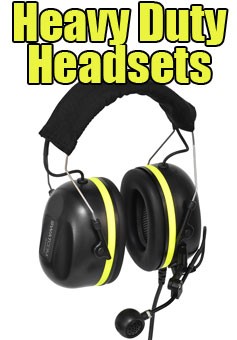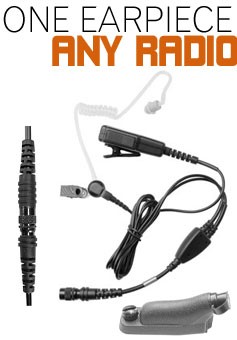
In this concise and comprehensive guide, we’ll be discussing decibels, the unit used for measuring sound. We’ll cover how decibels are used and measured, how many decibels are harmful to the human ear, and how best to protect your hearing from prolonged exposure to loud noises.
What is a Decibel?
A Decibel (dB) is the most commonly-used unit of measurement applied to sound.
Scientifically speaking, sound is a type of energy that travels in waves. Sound is measured in two ways; frequency (which concerns the number of vibrations made per second, and describes whether the sound is high or low-pitched), and amplitude which measures a sound’s loudness. Frequency is measured in Hertz (Hz), and amplitude is measured in decibels (dB).
The word ‘decibel’ is a portmanteau of the Latin word ‘Decimus’ (meaning ‘tenth’) and the surname of Scottish-American inventor Alexander Graham Bell, who invented the telephone and phonograph, as well as working extensively with the deaf.
The decibel scale runs from the quietest sound perceptible by human ears (listed as 0 dB), to more than 180 dB, the noise generated by a rocket being launched.
Decibels are also sometimes used to measure other types of energy, such as electrical output. However, decibels are most commonly used to accurately measure and describe the loudness of a sound.
How are Decibels Measured?
Decibels are measured logarithmically, meaning that sound intensity is formally measured in units of 10. Each increase of 10 dB is 10 times more forceful (read: louder) than the previous batch of 10. Ergo, instead of simply being 10 dB louder than 10 dB, a 20 dB sound is actually 10 times louder than a 10 dB sound.
Decibels are therefore a method of describing a particular ratio (in this case, demonstrating how much more or less powerful a sound is in relation to another sound). This ratio also could refer to voltage, sound pressure, intensity, or other factors.
A 20 dB increase, for example, is 100 times louder than the previous number of decibels. A sound measuring 20 dB is therefore 100 times louder than silence (0dB).
For further clarification, 50 dB is roughly the same volume as the low hum made by a refrigerator, or the murmur of a quiet conversation.
60 dB is the sound of a regular conversation conducted about a metre from the listener, and 100 dB is about the same volume as a hair dryer or blender being used close to the listener.
It is possible to see decibels listed as dBA. Here, the ‘A’ stands for ‘A-weighted decibel’ and refers more specifically to the relative pressure of sounds as perceived by the average human ear.
How Many Decibels is Harmful?
85 dB is generally considered to be the cut off for a safe level of noise. Anything below 85 dB is likely to be fine, even with prolonged exposure.
For reference, 80 dB would be roughly equivalent to a noisy environment such as a busy restaurant, or crowded area, or an average vacuum cleaner in use. Over relatively short periods, these will not harm human hearing.
Around 95 dB, expect to find items such as electrical drills. 100 dB would be roughly equivalent to a busy nightclub with booming music. 110 dB might be something like a power saw or jackhammer.
120 dB would be a rock concert or ambulance siren. 135 dB would be a loud squeak toy (directly in the ear), while 140 dB would be something akin to a plane taking off. At 150 dB, we have a shotgun blast.
Most of these sounds are not prolonged. An ambulance passes by quickly, while a plane only takes a few minutes to reach the air. Even a loud rock concert only lasts for a few hours. Experienced infrequently, even these incidents will probably not cause any long-term hearing damage. In cases of prolonged exposure, however, this can change.
Exposure Time
The harmful effect of loud sounds often depends on the duration of exposure. For example, exposure to sounds of 85 dB or above may not permanently damage human hearing. However, if those sounds persist for 8 hours or more, the risk of permanent damage (or even outright hearing loss) is significantly increased.
The following information is based on recommended daily exposure rates. It does not mean that harm will occur from isolated incidents that breach the maximum exposure time (although this is possible), but refers instead to daily exposure for the specified time or longer.
As one would expect, there is a direct correlation between exposure time and number of decibels; the greater the number of decibels, the shorter the duration of safe exposure time.
So, it is possible to be exposed to 85 dB for up to 8 hours at a time before permanent damage is risked. However, human ears can only stand exposure to 100 dB for around 15 minutes at a time.
Exposure to over 90 dB can only last for around 2 hours before permanent hearing damage is risked.
Sounds above 110 dB carry a risk of causing immediate damage. Understanding exposure times is very important to the preservation of ear health and good hearing.
How to Protect Your Hearing
Hearing protection is required by any person who is regularly exposed to volume levels of 85 dB or higher for any extended period.
Basic ear protection (such as ear plugs or Ear defenders) can cut noise levels down by as much as 30 dB. However, this is reduced if the protection is removed while the noise continues. Removing ear protection for just 1 hour of an 8-hour stretch reduces its efficacy by an average of over 20 dB.
For reference, earplugs are better at countering lower-frequency noises, while earmuffs are better at masking higher-pitched sounds.
Covering the ears in more rudimentary ways (such as cotton wool balls) will not be sufficient, as they will only reduce noise levels by about 7 dB.
If a person is exposed to 100 dB, but utilises ear protection that reduces noise by 33 dB or so, they will still be experiencing around 87 dB (-7 dB from protection level, divide that by 2, then subtracting that number from the overall noise level), which is still over the danger threshold. Accordingly, ear protection and regular breaks are required by anyone exposed to loud sounds over prolonged periods.
Thankfully, there are a number of highly-rated ear protection devices available at the time of writing, such as specialised earplugs, ear defenders, and canal caps.
-

Flare EarShade Earplug
Earshade® offers a unique, comfortable, and customizable experience with i...
-

Flare CALMER earplugs
Calmer® is a revolutionary product designed to diminish irritating noises ...
-

3M Peltor Electronic Earplug
3M PELTOR Electronic Earplugs protect your hearing from sudden loud (impuls...


























